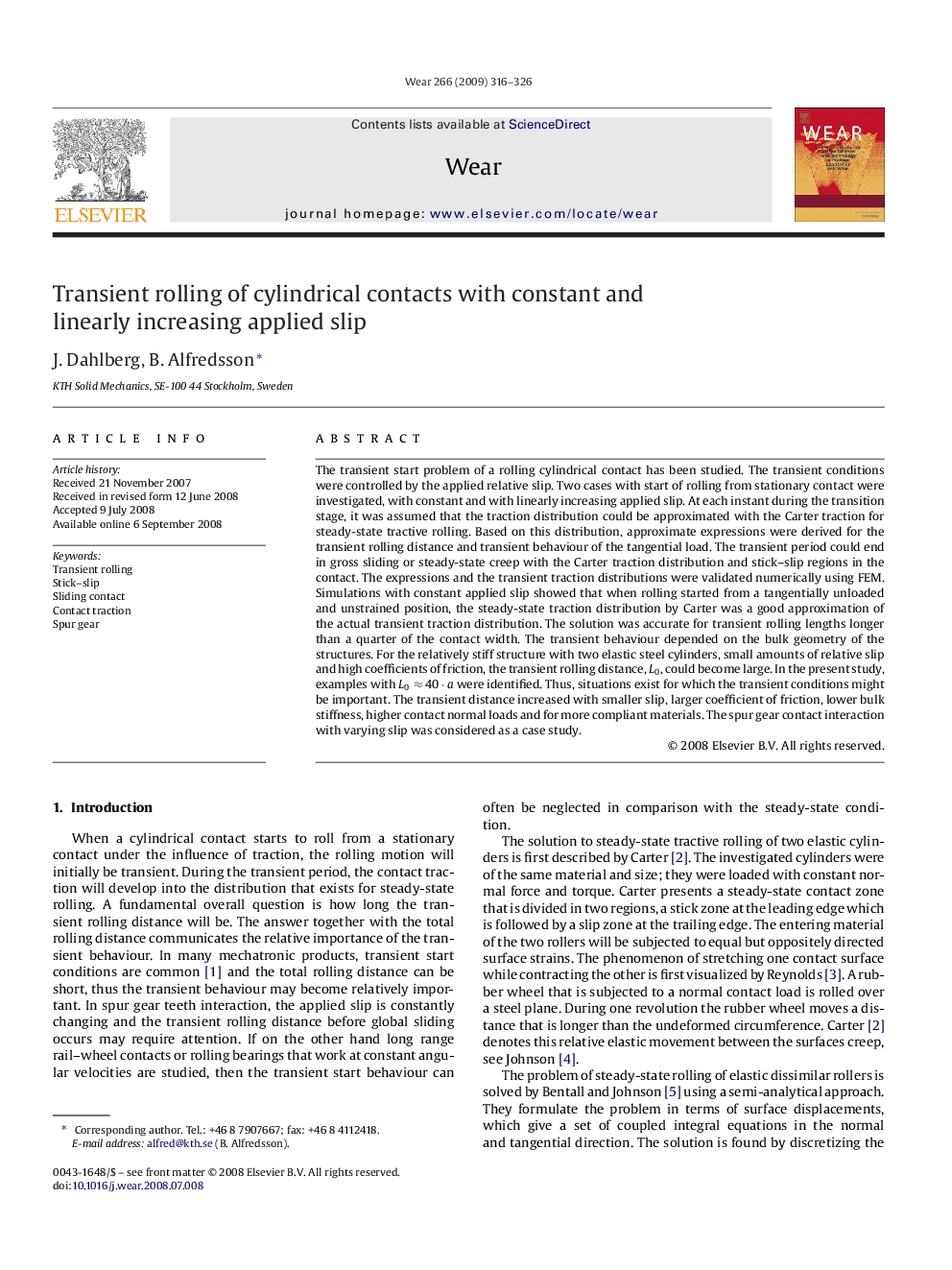| کد مقاله | کد نشریه | سال انتشار | مقاله انگلیسی | نسخه تمام متن |
|---|---|---|---|---|
| 618846 | 1455050 | 2009 | 11 صفحه PDF | دانلود رایگان |

The transient start problem of a rolling cylindrical contact has been studied. The transient conditions were controlled by the applied relative slip. Two cases with start of rolling from stationary contact were investigated, with constant and with linearly increasing applied slip. At each instant during the transition stage, it was assumed that the traction distribution could be approximated with the Carter traction for steady-state tractive rolling. Based on this distribution, approximate expressions were derived for the transient rolling distance and transient behaviour of the tangential load. The transient period could end in gross sliding or steady-state creep with the Carter traction distribution and stick–slip regions in the contact. The expressions and the transient traction distributions were validated numerically using FEM. Simulations with constant applied slip showed that when rolling started from a tangentially unloaded and unstrained position, the steady-state traction distribution by Carter was a good approximation of the actual transient traction distribution. The solution was accurate for transient rolling lengths longer than a quarter of the contact width. The transient behaviour depended on the bulk geometry of the structures. For the relatively stiff structure with two elastic steel cylinders, small amounts of relative slip and high coefficients of friction, the transient rolling distance, L0, could become large. In the present study, examples with L0≈40⋅aL0≈40⋅a were identified. Thus, situations exist for which the transient conditions might be important. The transient distance increased with smaller slip, larger coefficient of friction, lower bulk stiffness, higher contact normal loads and for more compliant materials. The spur gear contact interaction with varying slip was considered as a case study.
Journal: Wear - Volume 266, Issues 1–2, 5 January 2009, Pages 316–326